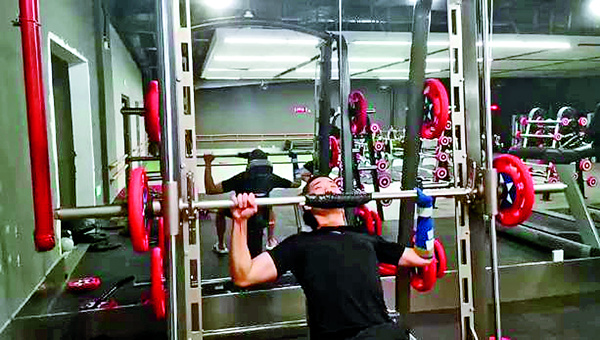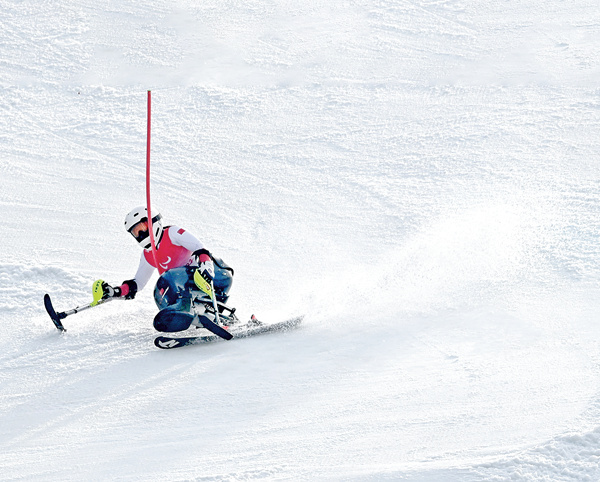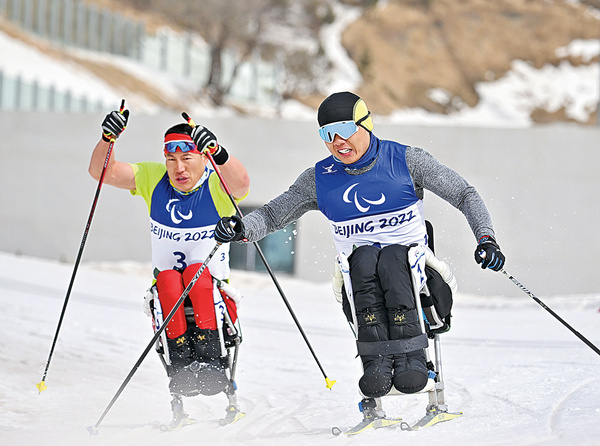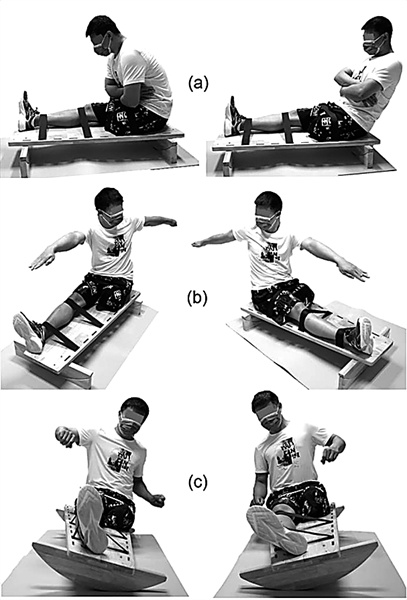By Fang Aiqing | China Daily |

A program led by Tsinghua University professor Ji Linhong has developed specific assistive devices to correct Paralympians' asymmetrical core muscle strength.[Photo provided to China Daily] Program backing China's golden generation of Paralympians set to provide far-reaching benefits for accessibility in winter sports, Fang Aiqing reports.
The relentless effort of Chinese athletes reaped great rewards as, between them, they won an unprecedented 61 medals at the recent Beijing 2022 Paralympic Winter Games.
They wouldn't have been able to reach such sporting heights without the technological support that kept them safe in both training and the competition itself, while also helping them to improve performance.
These assistive devices and items of sporting equipment are the result of a research program launched in 2018 and led by Ji Linhong, a mechanical engineering professor at Tsinghua University in Beijing.
"Science and technology are like catalysts for these athletes with physical challenges to tap their potential and realize their dreams," he says.
In the past four years, a dozen sports colleges and research institutes involved in the program have been implementing knowledge of material science, biomechanics and mechanical engineering to discover and solve problems for the Paralympians.
They paid close attention to physical strength and skills training, nutrition and psychological conditioning, injury prevention, fatigue recovery and rehabilitation of the athletes.
For example, the sit-skis Chinese cross-country skiers used and the "capsule" part of the mono-ski and outrigger setup some alpine skiers employed were all tailored to each individual competitor, taking into account different postures and range of movements.
"It's important that we're comfortable with the equipment, as it has to be integrated with our bodies and be able to move as one. They (Ji's team) modified the equipment whenever we needed them to," Zheng Peng, Paralympian cross-country skier and twotime gold medal winner, told China Youth Daily.
Mao Zhongwu, 36, who bagged one gold and two silvers in cross-country skiing, had, alone, swapped out a dozen sit-skis, as did other skiers, who also constantly needed to change their equipment, Ji says.
He explains that the material, structure, weight and intensity, and even the conjuncture of the artificial limb and human joints, can affect competitive performances.
The team also designed a digital platform to simulate real scenarios in laboratory conditions to analyze the way the skiers moved, from the way they used their poles and the skis, to the corresponding muscle activities.

Women's slalom sitting bronze medalist Liu Sitong competing at the Beijing Winter Paralympics on March 12.[Photo/Xinhua] In this way, the coaches could identify weaknesses and help them make adjustments accordingly.
This kind of exploration covered all six sports at the Beijing Winter Paralympics and accounted for Team China's breakthrough on the medal table, compared to its performance at the Winter Paralympic Games in 2018 in Pyeongchang, South Korea, where it won its first medal-wheelchair curling gold-since the country's first attendance at a Winter Paralympics in 2002.
"We consider the athletes' physical and psychological conditions. We work with care," Ji says.
Researchers in his team spent plenty of time with the athletes, applying digital methods to monitor their body condition and training load, making sure they didn't overtrain.
Via meticulous observation, they found some amputee athletes were not very sensitive to body temperature while training outdoors. By the time they began to feel the cold, they might already be injured.
In response to this, the researchers developed a graphene-based electrical heating garment with thermal insulation materials to help the athletes maintain their body temperature at optimum levels and prevent them from getting too cold.
Sometimes, the Paralympians suffered from soreness in their back and lumbar region, or were unable to keep their body balanced when in action, even though they were not injured.
Ji and his colleagues figured out that it was because, with their physical challenges, only some of their muscles could be exercised effectively.
In particular, athletes with unilateral amputations are accustomed to using the strength of only one side of their bodies and are, as a result, prone to asymmetrical core muscle strength. If left uncorrected, it can lead to secondary damage in the longer term.
Therefore, researchers developed specific training equipment and experimented with different possible ways to help the athletes exercise the parts of the body that required the extra work to restore balance.

Chinese Paralympians Zheng Peng (right) and Mao Zhongwu in competition at the Beijing 2022 Paralympic Winter Games on March 9.[Photo/Xinhua] Simply put, the program, offering support to around 200 Paralympians, aimed to improve man-machine fitness while strengthening the physical capabilities of the athletes with proper training.
China had a weak foundation in Winter Paralympic sports, with poor training conditions and insufficient technological support, according to Feng Meiyun, former deputy head of Beijing Municipal Bureau of Sports, who has been consulting for the program.
As well as building an overall training system for athletes with physical challenges and their coaches, and improving competition performance, the program also aimed to lay a foundation to attract more people with physical challenges to join the sports over the longer term, she says.
"We should popularize winter sports among people with physical challenges while providing proper training and comprehensive protection, which requires us to enhance research and development in this field," she says, adding that it's also important for building a clear system of cultivating professional athletes.
Ji has been looking into the fields of both competitive sports and assistive devices for people with physical challenges for over three decades. The smart upper arm prosthesis Tsinghua developed in the 1980s was able to cut finger nails and lace up shoes.
When Sun Changting won the gold medal in men's javelin at the 1992 Barcelona Paralympics, he was wearing a prosthesis developed by a research team which Ji was a part of.

Researchers evaluate Paralympians' muscular capability.[Photo provided to China Daily] Previously, Sun often found that the amputation stump on his left leg would be bleeding after removing his prosthesis following training, or the prosthesis would start to come loose halfway through sprinting.
In 2004, Ji invented a rehabilitative training robot to improve the upper limb functional ability in hemiplegic patients. Since 2010, he has combined neuroscience research findings with his research in exercise rehabilitation.
"The Paralympics show us that technology can empower people with disabilities and help them integrate into society," Ji says, adding that he hopes this year's Winter Paralympics will encourage more people with disabilities to give winter sports a try.
In the following months, the research team will review and summarize the program.
For Ji, however, current achievements are not able to support a clear business case, which is essential for more people with physical challenges to actually be able to-and afford to-take part in winter sport.
China has a large population of people with physical and mental challenges. "We have to form our own technological system in this field and seek a way to turn individualized solutions into something that can be mass-produced," he says.
In a larger sense, the importance of smart assistive devices and rehabilitation equipment in creating a barrier-free environment has been recognized.
Zhang Haidi, chairwoman of the China Disabled Persons' Federation, while addressing a national forum in July, called for related research and development.
"With technological support, we can provide efficient solutions at relatively lower social cost, which will eventually enable a barrier-free environment for all," Ji says.
Editor: Guo Lili

